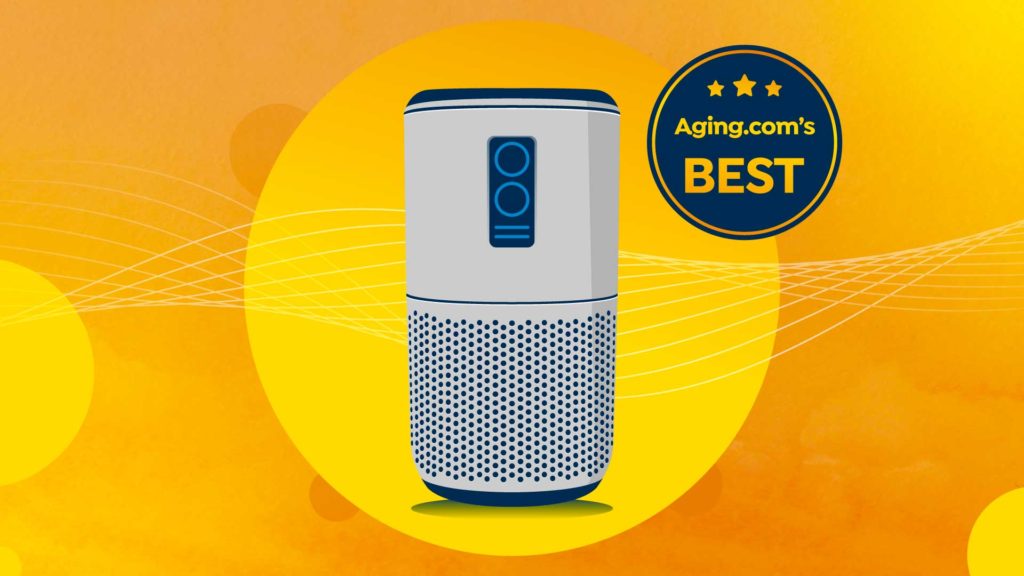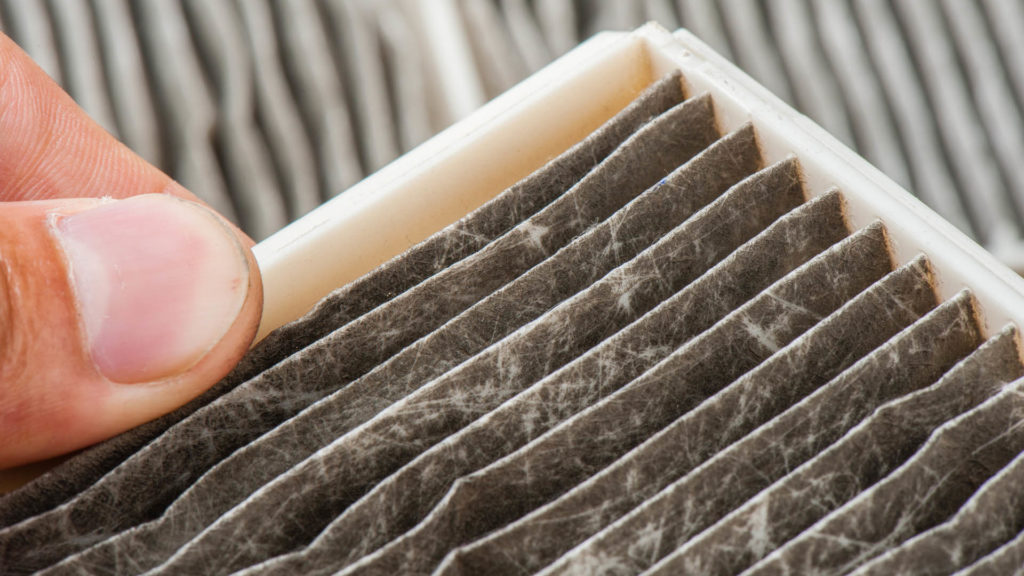
How to Buy the Right Air Purifier

Whether you realize it or not, the air inside your home can be contaminated with all sorts of pollutants. And breathing in unhealthy air can cause all sorts of health problems for you and your family. An air purifier can help rid your home of all the irritants floating around and help you breathe cleaner, healthier air. There are many different types of air purifiers on the market, all with different claims for effectiveness. Read this guide to help you determine which is the right air purifier for you. And read our ratings for the Best Air Purifiers of 2022.
Find What You Need
What is an Air Purifier?
Air purifiers do exactly as the name implies – they purify the air. They are portable devices made for your home that use an internal fan to pull irritants and pollutants out of the air, trap them, and send clean air back out. This filtration process will repeat itself several times an hour, improving your indoor air quality. Air purifiers are, by far, the best way to ensure the air inside your home is clean and purified.
Why Do I Need an Air Purifier?
No matter how hard you try, you will still get dirty air inside your home. We open doors and windows regularly, track things in on our feet and clothes, and have pets that drag things in on their fur and paws.
The particles floating around inside our homes are so small we generally can’t see them. But we can breathe them in, and they can cause a lot of problems for our respiratory systems, and bodies as a whole. Unhealthy air can be a trigger for allergies or asthma, can irritate chronic respiratory problems, as well as contribute to heart and lung issues. Air purifiers are made to get rid of the pollutants we can’t see by trapping the smallest pieces of dirt, dust, mold spores, pollen, pet dander, and smoke and sending cleaner air back out.
What Kind of Filters Do Air Purifiers Use?
Air purifiers use filters to trap and rid the air of irritants. Some of them may use more than one filter. Whatever air purifier you use, make sure it runs with a HEPA filter. HEPA, which stands for high efficiency particulate air, is the gold standard in air purification.
HEPA
HEPA filters are mechanical filters that force air through fine mesh. To be labeled a HEPA filter, it has to be tested and proven to remove at least 99.97 percent of harmful particles in the air.
Activated Carbon
These filters are made of an extremely porous form of carbon and are designed to trap gasses, odors, and volatile organic compounds (VOCs) from the air.
Pre-Filters
Many air purifiers come with a pre-filter. They are often washable or can be vacuumed and don’t have to be replaced. They remove larger particles out of the air before they reach the main filter of the unit, helping to preserve the life of the main filter.
UV-C Light
Some air purifiers claim to use UV-C light to kill bacteria or viruses. It’s important to know that for UV-C light to be effective at killing these germs, they have to be trapped and exposed to the light for an extended period of time. Many air purifiers with UV-C light haven’t been proven to be effective in air purifiers made for home use.
Staying Away from Ozone
You will find some air purifiers that emit ozone. It’s used to remove odor, leaving the air smelling ‘fresh.’ Breathing in ozone is not safe. Breathing in small amounts of ozone can cause chest pain, coughing, lung damage, shortness of breath, and throat irritation. The state of California has actually banned air purifiers with ozone from being sold in the state. When buying an air purifier, always look for a CARB-certified unit (California Air Resource Board).
What are the Benefits of Having an Air Purifier?
There are many benefits to having an air purifier. First of all – who wants to breathe dirty air? Even if you are healthy, contaminated air can cause headaches, sneezing, and coughing. For many reasons, cleaning the air around you is important.
- Air purifiers are designed to pull allergy triggers out of the air, making seasonal allergies easier to tolerate.
- Air purifiers pull pollutants out of the air that can trigger an asthma attack.
- Contaminants floating in the air can cause sleep disruption. Air purifiers can actually help improve your sleep and make you feel more rested in the morning.
- If you live in an area prone to wildfires, an air purifier can reduce the amount of smoke that gets inside your house.
What Should I Look for When Buying an Air Purifier?
There are several companies that make air purifiers and they offer a wide variety of features on the machines. You can easily buy a very basic and effective model, but there are a few features you may want to consider when you’re in the market for an air purifier.
Air Quality Monitors
Some air purifiers come equipped with sensors that measure and monitor air quality in your home. They’ll give you real-time feedback and the air purifier will adjust to filter out the bad air.
Wi-Fi-enabled/App-based
Many air purifiers can now connect to your home’s Wi-Fi and the company’s app. You can then make adjustments and operate the machine from your smartphone or tablet. Some units can even be voiced-controlled through Amazon’s Alexa or Google’s Assistant.
Multiple Fan Speeds
Most air purifiers have more than one fan speed. Some of them are equipped with as many as eight or more. Multiple speeds will allow you to increase or decrease how fast the fan is running and filtering out particles.
Pink/White Noise
Most people end up putting their air purifier in their bedroom. Be sure to buy a unit that has a pink or white noise setting. It will ensure you can sleep while the unit is running.
Other Features to Consider:
- Timers – to set the unit to come on or go off at certain times.
- Wheels – to move the unit around to the living room during the day and to the bedroom at night, if you prefer.
- Display shutoff – to ensure there are no lights keeping you awake if the unit is in your bedroom.
How Much Do Air Purifiers Cost?
Air purifiers come in a wide range of prices. You can buy one for as little as $100 or spend thousands of dollars. So, the budget you set will help you decide which air purifier to buy. The good news is some of the more budget-friendly models are just as effective as more expensive ones when it comes to cleaning the air.
Keep in mind, however, that the cost of the air purifier when you buy it isn’t your last and only expense. Air purifiers work with filters – some of them will have more than one. These will need to be replaced regularly. Check the website of the ones you are considering to see how much the filter replacement is. You will generally need to use the brand’s filter because it will make the unit run better and last longer. Also, if you encounter a maintenance problem, the warranty may be voided if you haven’t been using the company’s recommended filters.
Where Should I Put an Air Purifier?
An air purifier can go in any room of your house. Most people choose the bedroom, with the living room being the popular second choice. The garage is also a good option, that is where most of the chemical odors come from. The kitchen can be a source of cooking odors and an air purifier can effectively remove the odors and clean the air.
- Bedroom
- Bathroom
- Baby’s room
- Garage
- Kitchen
It’s best to choose the space where you spend the most time and would get the most benefit from it. Do not put it too close to the furniture or under a table, this will restrict the airflow and render the air purifier ineffective. If you choose to put the air purifier in a corner, make sure it is pulled away from the corner so that the air can flow around and out.
Once you choose the room, it’s important to know the square footage of that room. Every air purifier is made to cover a certain amount of square footage. The number will be displayed on the unit’s box. If you don’t know how big the room is – grab your tape measure and measure the length and width of your room. You will then multiply those two numbers to get the area. For example, if a room is 16 feet by 14 feet, the square footage is 224 sq ft.
It’s always best to get a unit that is made for a room bigger than yours. To get the most benefit out of your air purifier, ideally you want it to completely circulate all of the air in the room two times per hour making it about 96% effective. If you get a unit that is too small for your room, then the air purifier will circulate the air fewer times per hour and it may only be about 80% effective.
Once you pick the room and have figured out the size you need, you’ll want to decide the best spot in the room to place it. Keep these things in mind when making that choice:
- Put the air purifier close to a doorway, window or wall where airflow is the highest so it will capture the maximum amount of particles.
- If the unit is in your bedroom, put it close to you so it will circulate the air around you and help you breathe easier.
- Smaller air purifiers work best if you place them between three and five feet off the ground. Larger units should sit on the floor.
- Don’t try to hide the unit behind curtains or furniture. It won’t be able to work correctly or circulate the air in the room.
- Don’t put it near other electronic devices like your TV or stereo system. It can interfere with your air purifiers and keep it from working correctly.
Summary
There are plenty of air purifiers on the market to choose from, so be sure to find the one that has the features you are looking for. You’ll also want to make sure the unit you choose will be big enough to clean the air in the room where you plan to put it. And the most important thing to remember is to use it. It’s the only way to ensure you’re breathing healthier, cleaner air.


